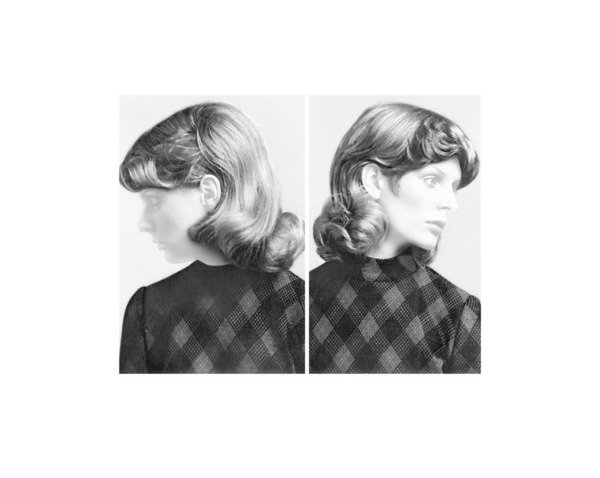Display
dal 7/11/2010 al 6/12/2010
Segnalato da
Maria Hahnenkamp
Ulrike Lienbacher
Kathe Hager von Strobele
Margret Wibmer
Astrid Peterle
7/11/2010
Display
Fotogalerie Wien, Wien
In the exhibition, the dictates of beauty are "put on display" and light is shed on the power of advertising and market in regards to the body in general and more particularly, concerning the idealized feminine body. The four exhibited artists question the limited concept of body and established norms in their photographic works and installations using artistic methods such as appropriation, hyperbole and reordering.

Introduction: Astrid Peterle
In the exhibition DISPLAY, the dictates of beauty are “put on display” and light is shed on the power of
advertising and market in regards to the body in general and more particularly, concerning the idealized
feminine body. Our body is subject to and undergoes many changes as a result of varying societal norms,
ideals of beauty, ever-changing discourses on hygiene, fashion trends as well as technological innovations.
The norms of the body-concept can especially be observed in binary gender constructs, in the connotation
of gestures and poses as being either “feminine” or “masculine”. The four exhibited artists question the
limited concept of body and established norms in their photographic works and installations using artistic
methods such as appropriation, hyperbole and reordering.
In her work,Käthe Hager von Strobele examines the function of clothing as the expression of social
perceptionsas well as their potential for a body-reality. For her photo series Left Over, the artist staged both
feminine and masculine items of clothing in private living and outdoor spaces. The bodies that could have worn
these clothes – clothes of a style similar to that of the surrounding space – have now vanished. Disconcerting, yet
at the same time familiar, the items of clothing “stand” like objects in a space devoid of people. Käthe Hager von
Strobele searches for the human existence in what has been left behind of activities and usages that – not least by
the means used to stage these left overs – references the individuals and the world view behind the clothing even
more clearly than a realistic image of the clothed individual.
Maria Hahnenkamp’s works are investigations into the stereotypical depictions of femininity across different
social levels and genres. She deals with the interaction between images in the media and the resulting body-
concept in society. The constructs of the depictions of femininity are put into question by means of citing other
images, appropriation, realignment, and reassignment. Citation from her video: “In image, the small perceptible
surface has since centuries triumphed over large immeasurable space. This is linked with an illusion (...). The
illusion consists in the failure of domination, because all space will finally be virtual. In losing their bodies,
humankind thereby loses the space as an environment and retains nothing but the field of vision of the image
surface.” (Dietmar Kamper)
At the center of Ulrike Lienbacher’s series Double is the perfectly styled hair do as the stereotype of
femininity. A handbook for hairdressers of the 1970s served as a reference. Lienbacher leaves the subjects with
pale faces – the individuality of the woman is sacrificed for the sake of an ideal of beauty. Double thereby
addresses issues concerning social subordination, exchangeability and the embodiment of social norms. The title
not only refers to the pairs of images, but to the interplay of the “original” image and the manipulated
doppelganger. By contrast, her photo series Tattoo focuses primarily on individualized bodies, since tattoos
generally symbolize the longing to differentiate oneself from the masses. The combination of tattoos and beauty-
images, Lienbacher addresses issues of attribution and embodiment of gender norms in contemporary bodies.
Margret Wibmer constructs absurd objects from old cameras and worn out everyday equipment, objects where
technical instruments have been stripped their function. By adding fur and other fabric, the objects gain human
quality. “On the one hand, her works can be read as a playful modification of the presentation of clothes (...),on
the other hand, as the reminiscence of absurd combinatory aspects in Surrealism. The artwork l.e.a. directly
recalls Meret Oppenheim’s fur-covered teacup, whereas here the fur coats a slide projector.” (Ludwig Seyfarth)
The relationship between the object and the human body is a central theme in both her photographic and
sculptural works, whereas the term ‘object’ is employed as the interface between apparatus and body.
Image: Ulrike Lienbacher, Double, 2004, Offsetprint, 48 x 60cm, edition of 10.
Opening: Monday, 8 November at 7:00 p.m.
Fotogalerie Wien
Wahringer Strasse 59, Wien
Open: Tu. - Fr. 14.00 - 19.00, Sa. 10.00 - 14.00. Closed on holidays
Free admission



